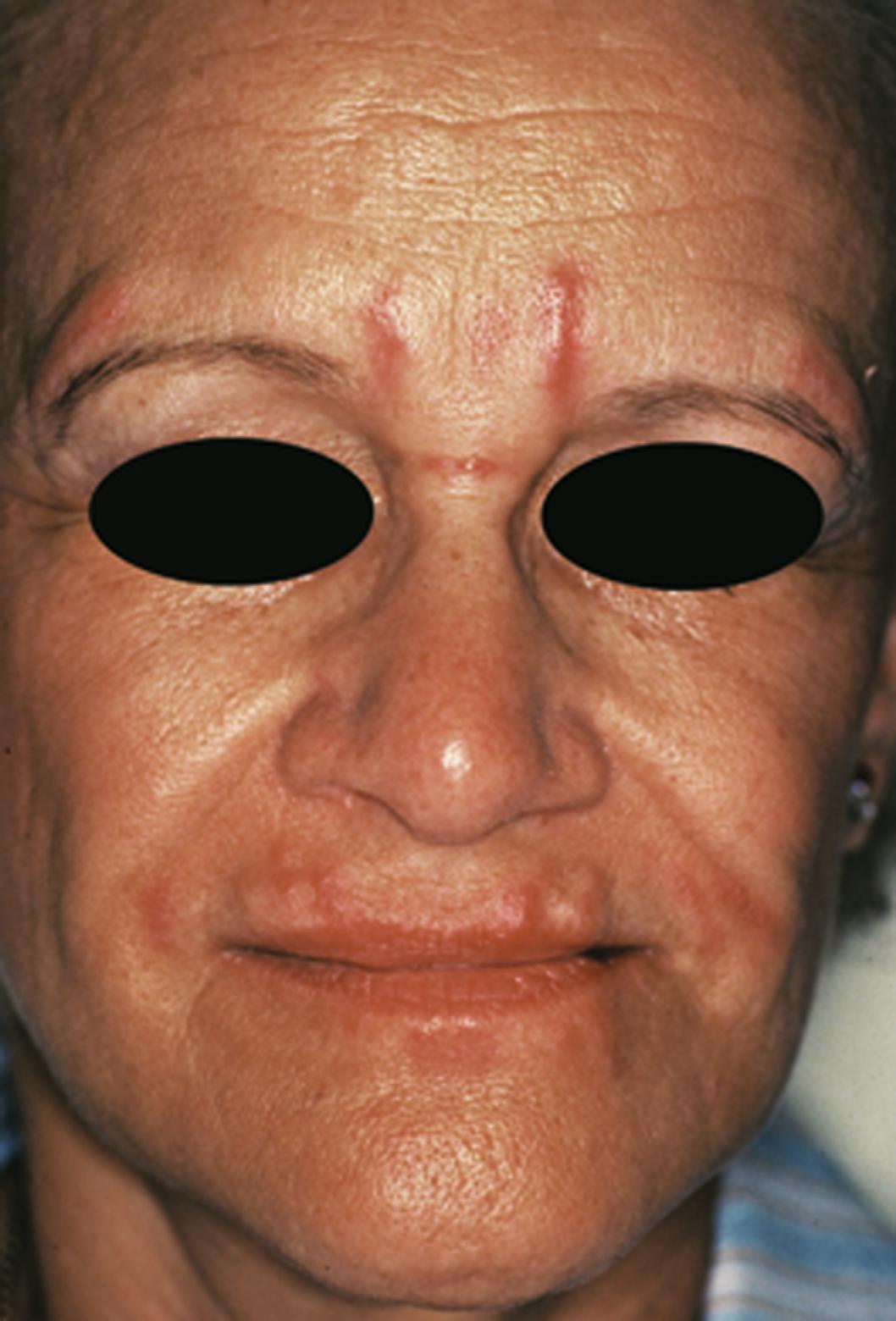Physical Address
304 North Cardinal St.
Dorchester Center, MA 02124
Granulomatous disorders of the skin comprise a broad category of diseases that are characterized by the accumulation of activated macrophages with an epithelioid appearance in the dermis or subcutaneous tissue. A granuloma is a distinct aggregate composed of epithelioid macrophages with or without multinucleated giant cells. These aggregates are typically surrounded by a rim of lymphocytes with plasma cells being variably present. Macrophages develop from bone marrow–derived monocytes that leave the circulation and enter the skin.
A histiocyte is a bone marrow–derived cell that is part of the mononuclear phagocytic system. Examples of histiocytes include tissue macrophages, Langerhans cells, and dermal dendritic cells. Histiocytes play an important role in the immune system, particularly with phagocytosis and antigen presentation.
Immune granuloma formation is a local tissue response to a poorly soluble substance that can induce a cell-mediated immune response (e.g., cutaneous tuberculosis). The persistent presence of a poorly soluble substance in the skin causes the activation of T cells, which secrete various cytokines that activate additional T cells, which transform macrophages into epithelioid macrophages and multinucleated giant cells. In contrast, foreign body granulomas typically are the result of larger aggregates of inert foreign material that cannot be phagocytized by a single macrophage (e.g., wood splinter). In general, granulomas are produced by infectious agents, foreign bodies, or alterations in the host immune system.
See Table 13.1 .
| Infectious agents | ||
|---|---|---|
| Fungi | Bacteria | Miscellaneous Infections |
| Blastomycosis Candidiasis Chromomycosis Coccidioidomycosis Cryptococcosis Histoplasmosis Sporotrichosis |
Actinomycosis Cat scratch fever Granuloma inguinale (donovanosis) Mycobacterial infections Nocardiosis Syphilis Tularemia |
Leishmaniasis Protothecosis (algae infection) |
| Foreign body agents | ||
| Exogenous | Endogenous | Miscellaneous Diseases |
| Aluminum Cosmetic fillers Hair Insect parts Paraffin Silica Splinters Starch Sutures Talc Tattoo pigment |
Bone Calcium Cholesterol Keratin Hair Sebum Urate crystals |
Actinic granuloma Crohn's disease Granuloma annulare Granulomatous cheilitis Granulomatous rosacea Lupus miliaris disseminatus faciei Necrobiosis lipoidica Rheumatoid nodule Sarcoidosis |
Sometimes. Granulomas usually present as dermal and/or subcutaneous nodules, although epidermal changes can be present. Foreign body granulomas may demonstrate a central erosion or ulceration secondary to an attempt by the body to extrude the foreign material. Granulomas often present as nonspecific erythematous nodules; however, they also may present as dermal nodules with an “apple-jelly hue” that is highly suggestive of an underlying granulomatous process. This apple-jelly hue can frequently be appreciated by using diascopy (applying pressure to the lesion with a glass slide).
Endogenous substances produce a granulomatous reaction when they come in contact with the dermis or subcutaneous fat. For example, one of the most common foreign body reactions occurs when an epidermal inclusion cyst wall ruptures and its keratin contents come in contact with the dermis. Normally, the keratin within the cyst is protected from the dermis by the cyst's epithelial lining. However, when a cyst ruptures, the keratin is exposed to the dermis, and being a poorly soluble substance, it produces a granulomatous response.
A second mechanism occurs when endogenous substances that are normally soluble crystallize into large aggregates, which then provoke a granulomatous foreign body reaction (e.g., uric acid crystals in gouty tophi and calcium in calcinosis cutis).
See Table 13.2 and Fig. 13.1 .
| Agent | Source |
|---|---|
| Silicone | Breast implants, joint prostheses, soft tissue injections, hemodialysis tubing |
| Silica | Soil and rock (very abundant), glass |
| Paraffin (oils) | Cosmetic injection (historically), factitial injection, grease gun injury |
| Starch | Surgical gloves contaminating wounds |
| Graphite | Pencil lead (see Fig. 13.1 A) |
| Thorns | Roses, cactus, yucca (see Fig. 13.1 B) |
| Hair | Barbers, dog groomers, sheep shearers |
| Talc | IV drug use, wound contamination |
| Aluminum | Adjuvant in diphtheria, pertussis, and tetanus immunizations |
| Zirconium | Deodorant sticks |
| Beryllium | Metal, ceramic, and electronic industries; fluorescent lamp workers (historically, as this ceased in 1951) |

Yes. Numerous cosmetic fillers, including products made from collagen ( Fig. 13.2 ), silicone, hyaluronic acid, poly- l -lactic acid, calcium hydroxylapatite, and polymethylmethacrylate, have been reported to produce foreign body granulomas. Granulomas due to biodegradable cosmetic fillers may disappear spontaneously, while granulomas due to nonbiodegradable fillers may be permanent. As the use of cosmetic fillers for wrinkle reduction and soft tissue augmentation becomes more common, the number of reported cases of filler-induced foreign body granulomas is increasing.

Parada MB, Michalany NS, Hassun KM, et al. A histologic study of adverse effects of different cosmetic skin fillers. Skinmed . 2015;4:345–346. Requena L, Requena C, Christensen L, et al. Adverse reactions to injectable soft tissue fillers, J Am Acad Dermatol . 2011;64:1–34.
Sometimes. A tattoo granuloma may retain some color or pigment that can help with the diagnosis. Silicone, paraffin, and other oils are often accompanied by fibrosis and a characteristic “Swiss cheese” appearance. The Swiss cheese–like holes are cavities formerly filled with the oily material that is lost during tissue processing. Also, some foreign bodies are birefringent under polarized light (e.g., talc, starch, silica, and some types of sutures).
Sarcoidosis is a systemic granulomatous disease characterized by the formation of noncaseating granulomas. The most commonly involved organs are the lungs, lymph nodes, and skin. The cause of sarcoidosis is unknown, but certain individuals may have a genetic predisposition. Sarcoidosis is more common in African Americans and women. The course is unpredictable, as the granulomas in sarcoidosis may resolve or progress to fibrosis.
Become a Clinical Tree membership for Full access and enjoy Unlimited articles
If you are a member. Log in here